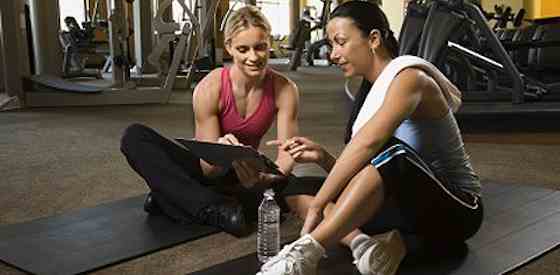- MENU
- HOME
- SEARCH
- WORLD
- MAIN
- AFRICA
- ASIA
- BALKANS
- EUROPE
- LATIN AMERICA
- MIDDLE EAST
- United Kingdom
- United States
- Argentina
- Australia
- Austria
- Benelux
- Brazil
- Canada
- China
- France
- Germany
- Greece
- Hungary
- India
- Indonesia
- Ireland
- Israel
- Italy
- Japan
- Korea
- Mexico
- New Zealand
- Pakistan
- Philippines
- Poland
- Russia
- South Africa
- Spain
- Taiwan
- Turkey
- USA
- BUSINESS
- WEALTH
- STOCKS
- TECH
- HEALTH
- LIFESTYLE
- ENTERTAINMENT
- SPORTS
- RSS
- iHaveNet.com: Health
Karen Asp, Certified Personal Trainer

I’m a fan of heart rate monitors. I train with one regularly, largely because it motivates me and keeps me on track with my fitness goals. If you do too, you should know that the formula we've all been using to measure exercise intensity (subtract your age from 220 then multiply by a certain percentage) may skew high when it comes to women.
According to a new study from Northwestern University, a more accurate way to calculate maximum heart rate for women is to subtract 88 percent of your age from 206 (men should keep using the old formula). On the plus side, women don’t have to sweat as hard because the numbers with the new formula are lower.
But what if all this number-crunching leaves you more tired than your workout? Or maybe you don't have a heart rate monitor and don't want to buy one. The good news is there's a more convenient way to measure workout intensity that works just as well for most exercisers. It's called rating of perceived exertion or RPE.
Here's how it works: As you exercise, simply ask yourself how hard you think you're working on a scale of zero to 10, where zero is sitting in a chair and 10 is all-out exertion.
- Moderate-intensity exercise feels around a three
- For a high-intensity workout, shoot for a five or above
The great thing about RPE is that it requires no equipment -- and you don’t have to stop during your workout to check your intensity. Plus it helps you tune into your body better.
So the next time you exercise, give RPE a try. I guarantee it'll help you sweat more effectively … and have more fun while you're at it.
Karen Asp is a certified personal trainer, group fitness instructor and fitness/health writer who contributes to numerous publications, including Fitness, Natural Health, Men's Fitness, Prevention, Self, Shape and Women's Health. She's also a contributing editor for Woman's Day and the Fit Travel blogger for AOL.
&nsbp;
Are energy bars a good pre- or post-workout snack?
That depends on what you mean by "good." If you like sweet and crunchy or chewy, many energy bars taste good. But if you're interested in good nutrition at a reasonable price, "you're better off with real food: a piece of fruit, handful of baby carrots or a sandwich on whole-grain bread," says Elizabeth Applegate, a nutritionist at the University of California at Davis.
The problems start with the word "energy." Most people assume that a so-called energy food makes you feel energetic. But to the federal agencies that regulate food labels, energy is just another way to say "food that contains calories." Of course, virtually everything we eat contains calories, so by the government definition, all foods are energy foods. This "labeling loophole" translates into "a clever marketing scheme" for energy bar makers, notes nutritionist Bonnie Liebman of the Washington, D.C.-based Center for Science in the Public Interest.
What's inside an energy bar? Most are loaded with high fructose corn syrup (translation: sugar). However, many are also high in fiber, low in saturated fat and trans fats, and contain some fruit, nuts and whole grains. So they're better than candy -- but not much. Bottom line: They're candy bars with a veneer of nutrition.
Copyright © All rights reserved.
AGING | ALTERNATIVE | AILMENTS | DRUGS | FITNESS | GENETICS | CHILDREN'S | MEN'S | WOMEN'S
Health - Are You Exercising Hard Enough?